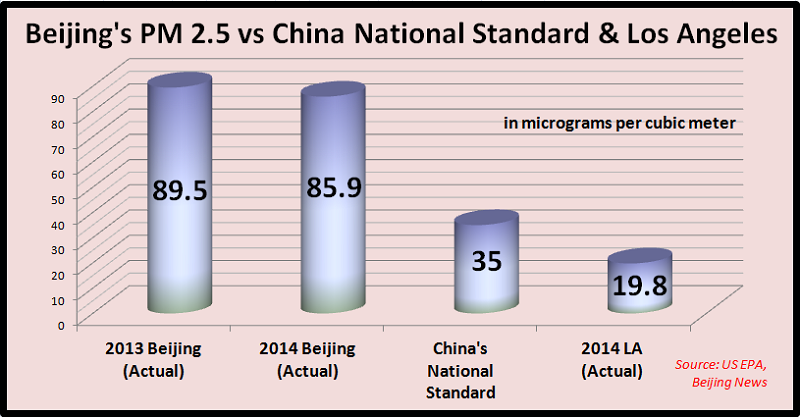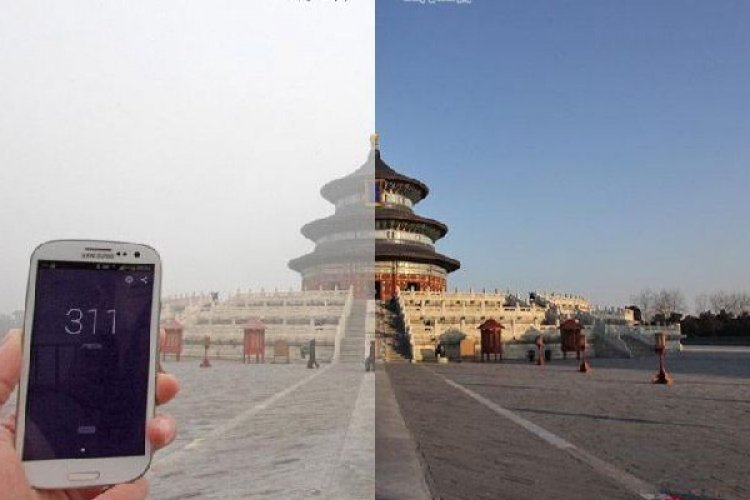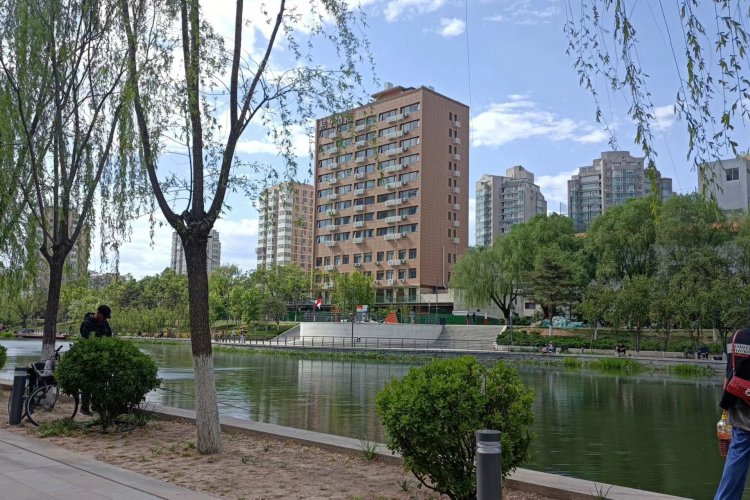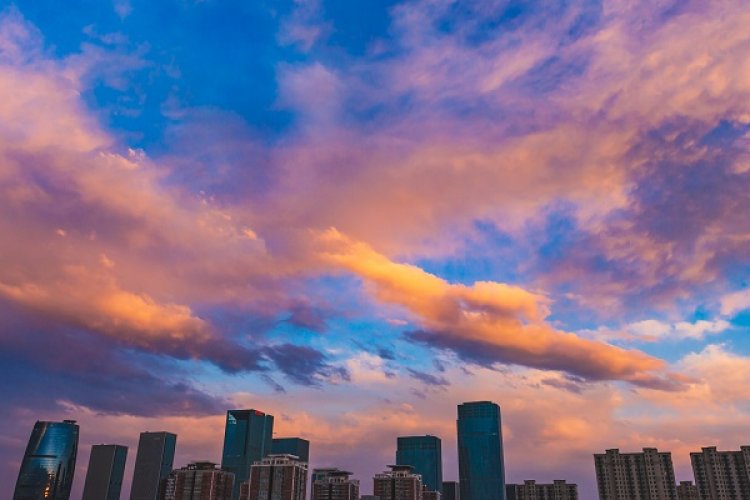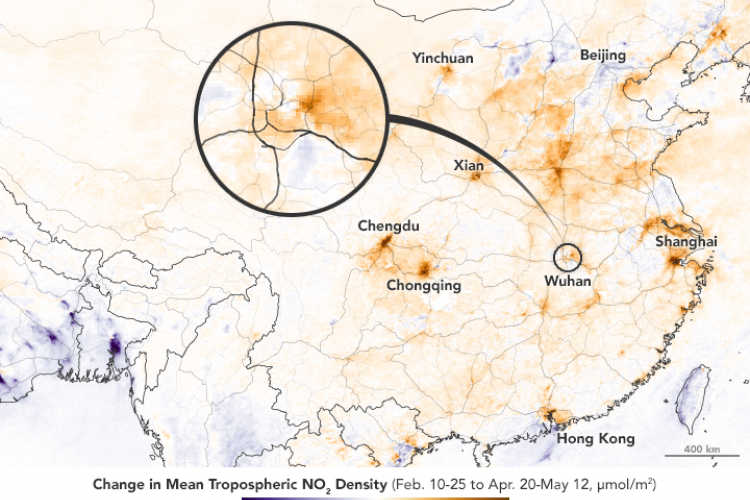And Now for the Bad News: While PM2.5 Declined in 2014, PM10 Shot Up
On Sunday we brought you the very welcoming news that PM2.5 concentrations in Beijing declined last year by four percent ... hooray! However, what we failed to mention is that PM10 levels actually increased last year, by a whopping 7.1 percent.
Less-than-normal annual rainfall and high winds that caused more sandstorms were cited as the main reasons for the increase, Municipal Environmental Protection Bureau Director Yu Jianhua was quoted as saying in this morning's Metro Reader. Yu added that city urban management and cleanliness is in need of improvement as well.
On the PM2.5 front, last year's average annual concentration was 85.9 micrograms per cubic meter, four percent lower than 2013's grim 89.5 and falling slightly short of the government-set target of a five percent reduction. While we're overjoyed that things aren't getting worse in the PM2.5 front, the extraordinarily high levels show just how far Beijing has to go.
Presuming the air continues to improve at the same rate (a four percent reduction each year), it will be another 22 years (2035) before it achieves the China national standard of 35 micrograms per cubic meter, and another 36 years (2050) before it reaches the average PM2.5 concentration in Los Angeles in 2014, one of the major metropolises in the US known for its poor air quality.
If Beijing could achieve a five percent annual reduction as targeted, we're still looking at 18 years (2032) to reach national standard and 29 years (2043) to reach Los Angeles 2014 quality. And as long as we're dreaming, if by some miracle the city could double the rate of decline to ten percent, it would still be nine years (2023) to achieve the national standard and 14 years (2028) to achieve what LA recorded in 2014.
The bureau also released some regional measurements for the city indicating a major difference between north and south: without mentioning how specifically the city was divided, the bureau said northern Beijing recorded an average PM2.5 concentration of 67 micrograms per cubic meter, while southern Beijing was almost double that 113 micrograms per cubic meter. Using those figures, northern Beijing could be meeting national standards as early as 2027, a mere 13 years from now.
Image: the Beijinger

